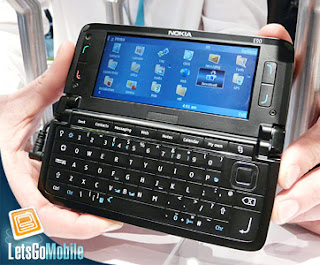The first Nokia Windows Phone devices will hit consumer shelves in a world very different from the moment when Steve Ballmer and Stephen Elop first sat down to discuss a partnership.
And it’s in fact amazing juts how much the mobile devices market has changed in the last year alone.
Back in March 2011, CEO Steve Ballmer and CEO and President Stephen Elop announced the Microsoft and Nokia marriage, sacrificing Symbian on the altar of Windows Phone.
Elop said at the time that Nokia had considered adopting Android, but opted for Windows Phone instead. The billions that Microsoft agreed to pay the Finnish phone maker had something to do with that, I’m sure.
It’s hard to tell whether Nokia has started regretting the choice made just yet, but there’s still plenty of time. And there’s still the possibility that it will.
Earlier this month, Kevin Turner, Chief Operating Officer was talking at the Worldwide Partner Conference 2011 about Microsoft winning in phones.
“We know that mobile is important. We have to do some very strategic things to get our phone volume up. And we've made some huge bets. The first bet we made was with Nokia, which has about 38 percent of the world's smartphone share. We have dreams and aspirations that we can get to 100 million units per annum with that single day. That's the kind of progress we want to drive with phones,” he said at the time. (emphasis added)
Now, there’s winning, and there’s Charlie Sheen winning. The two, I’d argue, are somewhat very different things, but then again it might be a matter of perspective.
Strategy Analytics published the results of its latest research of the smartphone market in the second quarter of 2011, and surprise, surprise, Nokia’s dominance is shattered.
Nokia managed to ship just 16.7 million smartphones in Q2 2011 down from 23.8 million in Q2 2010, and has been surpassed by both Samsung and Apple. Samsung’s smartphone shipments exploded in the last year from 3.1 million to 19.2 million, and Apple’s iPhone experienced a comparable growth from 8.4 million to 20.3 million.
Both Apple and Samsung are selling considerably less devices compared to Nokia when it was king, but they’re now the new no. 1 and 2.
Furthermore, Nokia’s smartphone vendor marketshare dropped dramatically between Q2 2010 and Q2 2011, dipping from 38.1% to as little as 15.2%. In the same period of time, Apple’s share of the smartphone market increased from 13.5% to 18.5% and Samsung’s went up from 5.0% to 17.5%.
In all fairness, Nokia’s huge drop is understandable. Some might be tempted to blame the transition to Windows Phone and the core shift at Nokia, but although this was an expected collateral result of the deal with Microsoft, it’s not the only factor.
I mean, look at RIM, the company’s one foot in the grave cannot be blamed on Windows Phone, as such, it must be something else instead.
If you were to ask me, is Nokia’s constant and continuous failure to provide valid alternatives to the iPhone and new devices from the likes of HTC and Samsung is a key part of the problem.
I remember when Nokia N97 came out not that long ago. This was the phone that I was going to buy, until I got to test it for about five minutes. Then I started looking at HTC devices. I purchased one almost immediately. Previously, I had owned a number of Nokia phones, never one from HTC, but the decision was simple, and one of the best I made in my life.
As far as I’m concerned Nokia N8 and Nokia E7 were the first devices from the Finnish maker worth a second look as smartphones. But they both fell, or should I say, crashed, in the too little, too late category.
Then there’s Symbian. Evolving slow, bringing no innovation at all year after year, the epitome of everything that’s not user-friendly, Symbian also has its part of the blame. But it’s already a thing of the past, so there’s no real sense of speaking ill of the dead.
And then, there’s Nokia’s monumental failure at creating a comprehensive application and service ecosystem for Symbian. I still remember what it took to find, download and install an app on a Nokia phone. A kind of a never-again experience.
There simply isn’t room for Nokia’s share of the smartphone market to drop another 22.9%. Nokia would fall off the map entirely. They might as well reinvent themselves as a fishing company.
And although Windows Phone is innovative and evolving rapidly, user-friendly and with a growing ecosystem, it might not be a parachute big enough to stop Nokia from its free fall.
The conclusion is clear: consumers are buying fewer Nokia smartphones and more Apple iPhones and Samsung devices. It will be extremely difficult for Windows Phone if not impossible, Mango or no Mango, to breathe new life into Nokia and to reverse the current trends on the smartphone market.
Especially when the strong growth that Apple and Samsung are experiencing is rapidly closing the window for Nokia Windows Phone device.


No comments:
Post a Comment